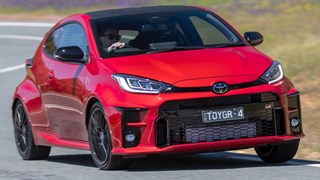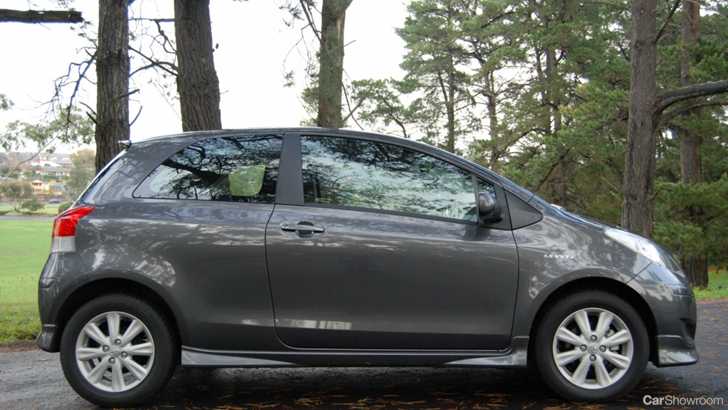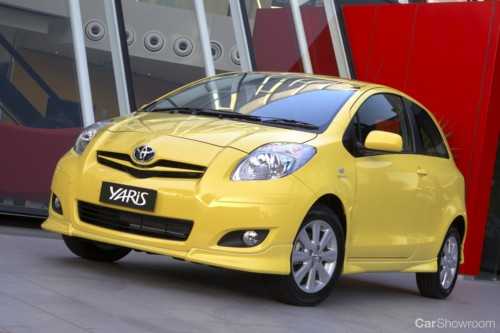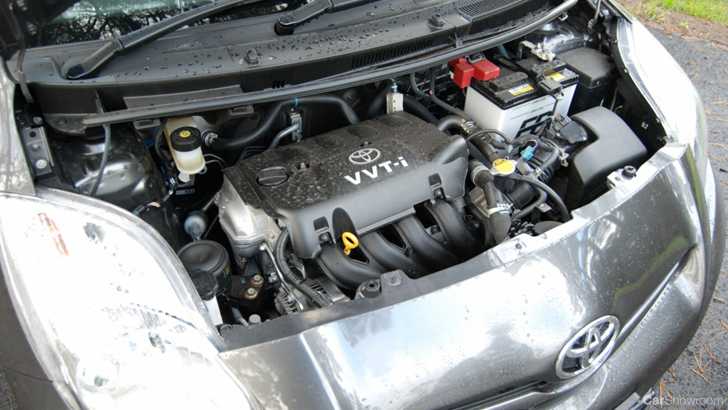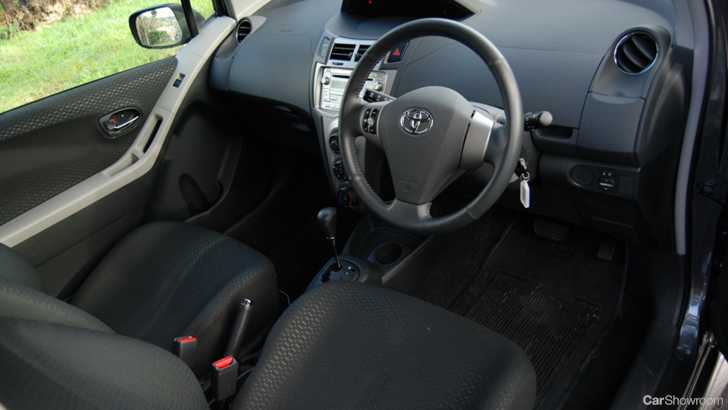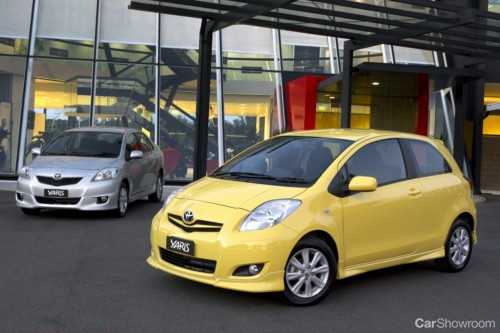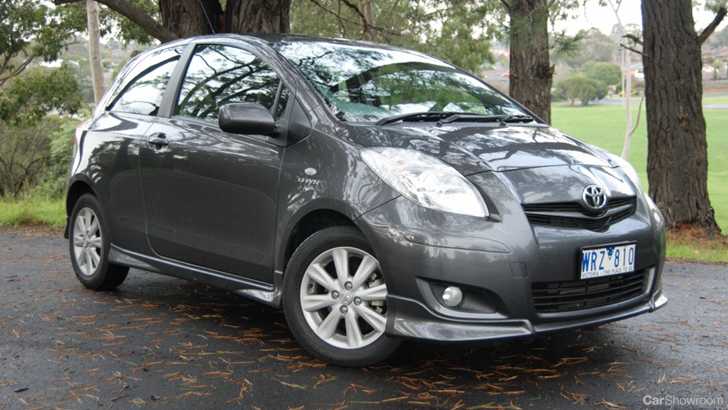Toyota’s Compact Gets a Facelift
Toyota’s upgraded Yaris clings to the lead in the compact car sales race despite tough competition from rivals like the Hyundai Getz.
The cute and contemporary Yaris is sold in a staggering 16 models with a choice of 1.3-litre or 1.5-litre powerplants.
Car Showroom has always awarded strong scores to the Yaris, but clearly recent new players like the Ford Fiesta and Honda Jazz are impressive additions to the compact car mix.
Toyota handed us the keys to the latest Yaris YRX 3-door and after a week we remain convinced that the Yaris can stand toe-to-toe with most rivals and certainly scores big points in the value-for-money stakes.
What You Get
Three-door hatch, five-door hatch or four-door sedan, 1.3-litre or 1.5-litre engine – the most you will pay for a Yaris is $23,190 and the entry-level model is only $15,690. That buys you a lot of car with the Yaris, plus competent performance, interior practicality, five-star rated fuel economy and of course Toyota’s DNA – excellent quality and reliability.
As you would expect, everything works with commendable ease in a Yaris. Female buyers appreciate it’s light steering and compact dimensions for convenient parking, while everyone appreciates details like the wide-opening rear hatch and the ease with which seats can be folded to quickly convert the cargo area when carrying extra luggage.
Under The Hood
Lift the hood of the entry-level Yaris YR models and you will find Toyota’s 1.3-litre engine that delivers 63kW and 121Nm; every other derivative gains the 1.5-litre powerplant that’s good for 80kW/141Nm.
Manual versions have been awarded the maximum five-star rating on the Federal Government’s Green Vehicle Guide.
Fuel consumption for the 1.3-litre (combined cycle) is 6.0l/100kms with CO2 of just 141g/km. The 1.5-litre is listed at 6.l/100kms and 145g/km. Both very impressive and show the benefits of Toyota’s global engineering efforts.
Both are very competent engines but there is no doubt the 1.5-litre works just a tad easier than the 1.3-litre, particularly accelerating into traffic on the freeway and when fully-loaded.
The Interior
Slide behind the wheel of a Yaris and the first thing you notice is the central-mounted instrument binnacle with digital readouts. Some or our colleagues who climbed into the YRX model we tested commented on this feature, but the reality is that functionality is no different to a conventional layout and the central-mounting does provide a more balanced look.
New trim materials, including a nice Jacquard-weave for the seats were included in the facelift. Telescopic steering wheel adjustment is also a welcome addition.
There’s a useful CD audio system with optional Bluetooth and YRX and YRS hatch models have illumination for the steering wheel-mounted audio switches.
The front feels spacious for cars in this segment – especially around the shoulders - and the Car Showroom juniors in their booster/child seats were comfortable in the rear. Not too many adults wouldn’t appreciate a lengthy trip in the rear seat, but the Yaris can accommodate four or five adults for short distances and access to the rear seat is no problem.
Versatility is a Yaris strong point and when the rear seats are folded, the large cargo area is flat.
Exterior & Styling
The Yaris is actually quite bold in its appearance when measured by Toyota’s normally conservative exterior design standards. We remain fans of the Yaris’ modern styling and it still looks good even when parked against newer rivals like the Honda Jazz and Ford Fiesta.
Minor revisions included in the facelift include new, larger headlights, new wheels and eight-spoke alloys for the YRX, side indicator lights mounted in the exterior mirrors, new grilles, bumpers and tail-lights with light-emitting diode (LED) lamps for extra brightness.
On The Road
Having driven both the Ford Fiesta and Honda Jazz and highlighted their excellent driving dynamics, we were curious how the upgraded Yaris would compare. The answer is very well.
The YRX with its 1.5-litre engine delivers commendable acceleration and the ratios of the four-speed automatic transmission are nicely spaced to keep it operating in the torque curve.
Steering response is sharp and overall the Yaris remained nicely balanced during a high speed mountain run.
Around town the large glass area afforded by the Yaris’ design made parking maneuvers easy (and of course you can use those spaces marked ‘Small Cars Only’ in tight city carparks).
Challenges
In some ways the senior member of the compact car segment market leaders, the Yaris remains the number one best-selling model. Compared to the Fiesta and Jazz, the 1.5-litre engine is a little noisy at the limit and we felt the noise suppression in the front suspension was not quite up to the refinement levels of the Ford and Honda newcomers.
Verdict
The Yaris shares a trait with all Toyota products – they’re just so damned good at everything they do, it’s hard to be critical.
If you’re shopping in the compact segment, the Yaris must be on your list and its all-round competency, value-for-money and the strength of the Toyota brand will count for a lot.
The Competition
Behind the Yaris in the compact car sales race is the Hyundai Getz. It is one of the best looks to come from Korea and carries a price advantage.
The Honda Jazz presents an outstanding styling package inside and out, is nicely refined on the road and competitively priced.
Ford’s European-sourced Fiesta delivers a great look and superb on-road dynamics. Pricing is competitive, but the 1.6-litre engine is not available with an automatic gearbox leaving auto buyers with just one engine choice – the 1.4-litre.
Likes
Excellent build quality; well-equipped; versatile
Dislikes
Engine gets noisy at the limit; suspension refinement over bumps not the best in class
